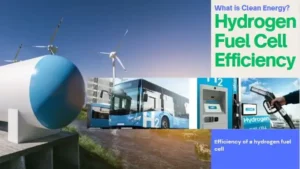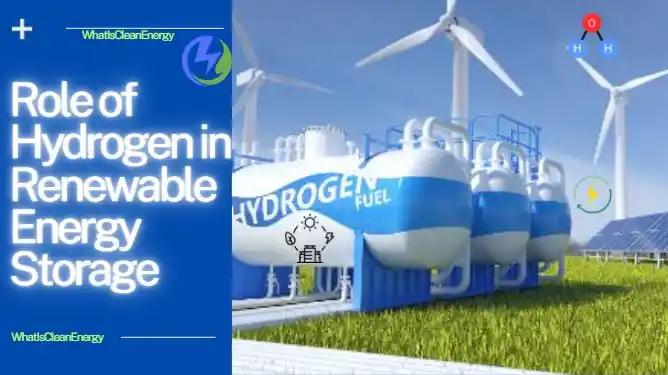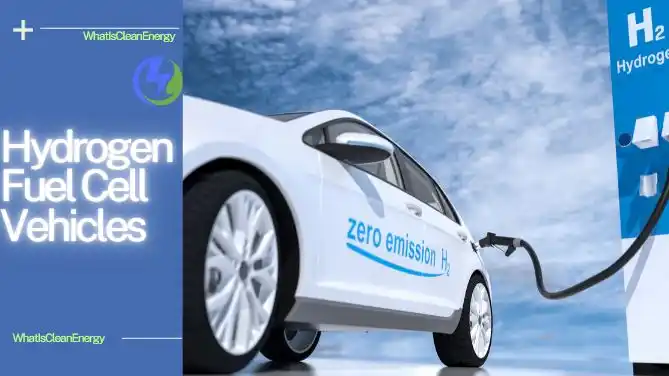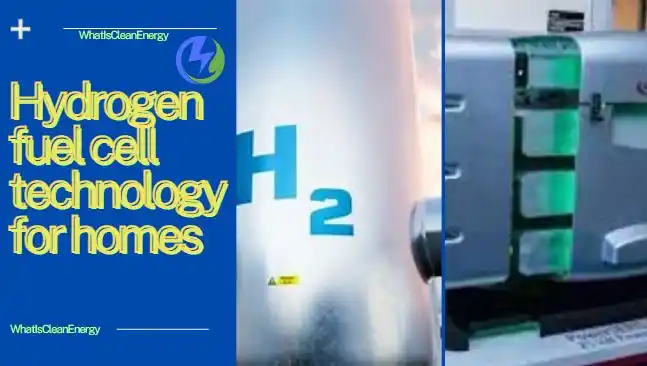Hydrogen fuel cell vehicles (HFCVs) and electric vehicles (EVs) are both types of zero-emission vehicles that use electricity to power their motors. However, they have different ways of storing and generating electricity. Hydrogen fuel cell vehicles (HFCVs) use hydrogen gas as a fuel, while EVs use rechargeable batteries. In this article, we will compare hydrogen fuel cell vehicles vs electric vehicles (HFCVs and EVs) in terms of their carbon footprint, efficiency, refueling and recharging, and disposal.
use batteries to store electricity. This electricity powers an electric motor, which drives the vehicle. You charge the batteries by plugging the car into an electric outlet or charging station. The stored electricity is then used to power the motor.
Basic Components of an EV
- Battery Pack: The heart of an EV, storing electrical energy.
- Electric Motor: Converts electrical energy into mechanical energy to drive the wheels.
- Inverter: Converts direct current (DC) from the battery to alternating current (AC) for the motor.
- Charging Port: Allows the vehicle to connect to an external power source for recharging.
- Controller: Manages power flow from the battery to the motor, ensuring smooth operation.
Step-by-Step Process
- Charging the Battery
- Plugging In: You connect the EV to a charging station or a home outlet using a charging cable.
- Charging Process: Electricity flows from the power source into the battery pack. The charging speed depends on the type of charger used (Level 1, Level 2, or DC fast charger).
- Storing Energy
- Battery Pack: The battery pack stores the electrical energy in the form of chemical energy. Most EVs use lithium-ion batteries due to their high energy density and efficiency.
- Powering the Motor
- Inverter Role: When you start the car, the inverter converts the DC electricity from the battery into AC electricity for the motor.
- Motor Operation: The electric motor uses this AC electricity to generate mechanical energy, which turns the wheels of the car.
- Driving the Vehicle
- Acceleration: When you press the accelerator pedal, the controller regulates the power flow from the battery to the motor. This allows for smooth acceleration.
- Regenerative Braking: When you brake or decelerate, the motor acts as a generator, converting kinetic energy back into electrical energy and storing it in the battery. This process helps extend the driving range.
- Monitoring and Control
- Onboard Computer: The EV’s onboard computer continuously monitors the battery’s state of charge, motor performance, and other critical systems. It ensures optimal performance and safety.
- Dashboard Display: The driver receives real-time information about battery level, range, and other important metrics through the dashboard display.
Charging Infrastructure
- Home Charging
- Level 1 Charger: Uses a standard household outlet (120V). It provides a slow charge, typically adding about 3-5 miles of range per hour.
- Level 2 Charger: Requires a 240V outlet, similar to what is used for large appliances. It charges faster, adding about 10-60 miles of range per hour.
- Public Charging
- Level 2 Public Chargers: Found in parking lots, shopping centers, and workplaces. They provide a moderate charging speed.
- DC Fast Chargers: Located along highways and in urban areas. They can charge an EV to 80% in about 30 minutes, making them ideal for long-distance travel.
Battery Management
- Thermal Management: EVs have systems to keep the battery at an optimal temperature, ensuring efficiency and longevity. This includes cooling and heating mechanisms.
- Battery Health Monitoring: The onboard computer tracks the battery’s health, managing charging cycles to prevent overcharging and deep discharging, which can degrade the battery.
Advantages of EVs
- Efficiency: Electric motors are more efficient than internal combustion engines, converting more energy from the battery into motion.
- Low Maintenance: EVs have fewer moving parts, reducing the need for regular maintenance like oil changes.
- Environmental Benefits: EVs produce no tailpipe emissions, helping to reduce air pollution and greenhouse gas emissions.
- Low Operating Costs: Electricity is cheaper than gasoline, and EVs have fewer moving parts, reducing maintenance costs.
Challenges of EVs
- Charging Time: Charging an EV can take longer than refueling a gasoline car, especially with slower chargers.
- Range Anxiety: Some drivers worry about running out of battery before finding a charging station, though this is becoming less of an issue with improved range and charging infrastructure.
- Battery Degradation: Over time, the battery’s capacity can decrease, reducing the vehicle’s range. However, advancements in battery technology are addressing this issue.
Future of EVs
- Battery Technology: Ongoing research aims to develop batteries with higher energy density, faster charging times, and longer lifespans.
- Charging Infrastructure: Expansion of charging networks, including ultra-fast chargers, will make EVs more convenient for all drivers.
- Integration with Renewable Energy: Using renewable energy sources to charge EVs can further reduce their environmental impact.
A comparison of hydrogen fuel cell vehicles vs electric vehicles
| Criteria | HFCVs | EVs |
|---|---|---|
| Carbon footprint | It depends on how hydrogen is produced. Grey hydrogen has a high carbon footprint, while green hydrogen has a low carbon footprint. | It depends on how electricity is generated. Fossil fuels have a high carbon footprint, while renewable sources have a low carbon footprint. |
| Efficiency | Has a higher energy density but a lower fuel cell efficiency and well-to-wheel efficiency than EVs. | Has a lower energy density but a higher battery efficiency and well-to-wheel efficiency than HFCVs. |
| Refueling and recharging | Can be refueled in minutes at hydrogen fueling stations, but the stations are scarce and expensive. Hydrogen fuel is also costly and variable. | Can be recharged in hours at charging stations, but the stations are abundant and cheap. Electricity is also cheaper and more stable. |
| Disposal | Has a lower disposal impact than EVs, because the components are fewer and simpler and can be recycled or reused. | Has a higher disposal impact than HFCVs, because the components are more and complex and can be hazardous or difficult to recycle or reuse. |
Carbon footprint
The carbon footprint of a vehicle is the amount of greenhouse gas emissions it produces throughout its life cycle, from production to disposal. Both HFCVs and EVs have lower carbon footprints than conventional gasoline or diesel vehicles, but they are not completely carbon-free. The carbon footprint of HFCVs and EVs depends largely on how the hydrogen and electricity they use are produced.
How efficient is EV compared to hydrogen?

HFCVs
HFCVs produce electricity by combining hydrogen and oxygen in a fuel cell, which emits only water vapor as a by-product. However, hydrogen is not a natural source of energy, but an energy carrier that needs to be produced from other sources. The most common method of producing hydrogen is steam reforming. This method uses natural gas as a feedstock and releases carbon dioxide as a waste product. This is called grey hydrogen, and it has a high carbon footprint.
Another method of producing hydrogen is electrolysis, which uses electricity to split water molecules into hydrogen and oxygen. Green hydrogen earns its name when electricity originates from renewable sources like solar or wind power, resulting in a low carbon footprint. However, green hydrogen is more expensive and less available than grey hydrogen.
EVs
EVs use electricity stored in batteries to power their motors. The batteries can be recharged from the grid or from renewable sources, such as solar panels or wind turbines. The carbon footprint of EVs depends on the mix of energy sources used to generate the electricity they use. If the electricity comes from fossil fuels, such as coal or natural gas, the carbon footprint of EVs is higher than if the electricity comes from renewable sources, such as hydro or nuclear power.
The carbon footprint of EVs also depends on the materials and processes used to manufacture and recycle the batteries, which can have environmental impacts.
Efficiency
The efficiency of a vehicle is the ratio of the useful energy output to the energy input. Higher efficiency wastes less energy and covers more distance per unit of energy. Both HFCVs and EVs have higher efficiencies than conventional gasoline or diesel vehicles, but they have different advantages and disadvantages.
HFCVs
HFCVs have a higher energy density than EVs, which means they can store more energy per unit of weight or volume. This gives them a longer range and a shorter refuelling time than EVs. HFCVs can travel up to 300 miles on one tank of hydrogen. It refuels in a matter of minutes, similar to gasoline or diesel vehicles. However, HFCVs have a lower fuel cell efficiency than EVs, which means they convert less of the hydrogen energy into electricity. HFCVs also have lower well-to-wheel efficiency than EVs. This means they lose more energy during the production, distribution, and storage of hydrogen.
EVs
EVs have a higher battery efficiency than HFCVs. This means they convert more of the electricity stored in the batteries into mechanical power. Electric vehicles (EVs) also have a higher well-to-wheel efficiency than HFCVs. This means they lose less energy during the generation, transmission, and charging of electricity. However, EVs have a lower energy density than HFCVs. Which means they can store less energy per unit of weight or volume. This gives them a shorter range and a longer recharging time than HFCVs. EVs can travel up to 200 miles on one charge and recharge in several hours, depending on the type and level of charging.
Refueling and recharging
Refueling and recharging a vehicle is the process of replenishing the energy source that powers the vehicle. Both HFCVs and EVs have different refueling and recharging options and challenges.
HFCVs
HFCVs can be refuelled at hydrogen fueling stations, which are similar to gasoline or diesel stations but use high-pressure pumps to deliver hydrogen gas to the vehicle’s tanks. The refuelling process takes about five minutes, and the vehicle is ready to drive. However, hydrogen fueling stations are scarce and expensive to build and maintain. There are only about 50 hydrogen fueling stations in the U.S., mostly in California, and about 500 worldwide. The cost of hydrogen fuel is also higher than gasoline or diesel and varies depending on the method and location of production.
EVs
EVs can be recharged at charging stations, which are similar to electric outlets, but use different levels and types of charging to deliver electricity to the vehicle’s batteries. The recharging process can take from 30 minutes to 8 hours, depending on the level and type of charging. The vehicle can be driven while the batteries are partially charged, but the range will be reduced. However, charging stations are more abundant and cheaper to build and operate than hydrogen fueling stations. There are about 40,000 charging stations in the U.S. and about 1 million worldwide. The cost of electricity is also lower than hydrogen fuel and varies depending on the time and location of charging.
Disposal
The disposal of a vehicle is the process of getting rid of the vehicle and its components at the end of its life cycle. Both HFCVs and EVs have different disposal impacts and opportunities.
HFCVs
HFCVs have a lower disposal impact than EVs because they have fewer and simpler components that can be recycled or reused. The main components of HFCVs are the fuel cell stack, the hydrogen tanks, and the electric motor. Other applications, like stationary power generation or backup power, can recycle or reuse the fuel cell stack. The hydrogen tanks can be recycled or reused for other purposes, such as compressed air storage or water heating. For other vehicles or machines, the electric motor can undergo recycling or reuse.
EVs
EVs have a higher disposal impact than HFCVs because they have more complex components that can be hazardous or difficult to recycle or reuse. The main components of EVs are the batteries, the electric motor, and the power electronics. The batteries can be toxic or flammable if not handled properly, and require special recycling or reuse processes. The electric motor can be recycled or reused for other vehicles or machines, but may contain rare earth metals that are scarce and expensive. Power electronics, while recyclable or reusable for other devices or systems, might contain hazardous substances requiring safe disposal.
Conclusion
HFCVs and EVs are both zero-emission vehicles that use electricity to power their motors, but they have different ways of storing and generating electricity. HFCVs use hydrogen gas as a fuel, while EVs use rechargeable batteries. Hydrogen fuel cell vehicles have advantages over EVs in terms of range, refueling time, and disposal impact, but have disadvantages in terms of carbon footprint, efficiency, refueling cost and availability.
EVs have advantages over HFCVs in terms of carbon footprint, efficiency, recharging cost and availability. But it have disadvantages in terms of range, recharging time, and disposal impact. Both HFCVs and EVs have the potential to reduce greenhouse gas emissions and improve air quality. But they also face challenges and limitations that need to be addressed. The choice between HFCVs and EVs may depend on the personal preferences, needs, and values of the consumers, as well as the availability and affordability of the vehicles and their energy sources.
Frequently Asked Questions (FAQs)
How does the efficiency of electric vehicles (EVs) compare to hydrogen-powered vehicles?
EVs are generally more efficient than hydrogen-powered vehicles. They convert a higher percentage of energy from the grid to power the vehicle compared to the process of generating and using hydrogen in fuel cells.
Will hydrogen vehicles surpass electric cars in popularity?
It’s difficult to predict. While hydrogen vehicles offer advantages like quick refueling and longer ranges, the infrastructure for hydrogen production and distribution is not as widespread as EV charging networks, which might affect their widespread adoption.
What sets electric vehicles (EVs) apart from fuel-cell electric vehicles (FCEVs)?
The primary difference lies in the power source. EVs use batteries to store and utilize electricity to power an electric motor, while FCEVs generate electricity on-board using hydrogen fuel cells, which combine hydrogen and oxygen to produce electricity to power the vehicle’s motor.
Why is hydrogen fuel better than EVs?
Hydrogen fuel offers advantages in terms of quicker refueling times and longer driving ranges compared to many battery-powered EVs. Hydrogen’s capacity to derive from diverse sources and its potential for large-scale storage make it suitable for heavy-duty transportation and specialized applications where battery storage might not suffice.
Is a hydrogen fuel cell an EV?
Yes, a hydrogen fuel cell vehicle is categorized as an electric vehicle (EV). While it doesn’t rely on a traditional internal combustion engine, it uses an electric motor for propulsion. Hydrogen fuel cell vehicles generate electricity by a chemical reaction between hydrogen and oxygen within the fuel cell, powering the vehicle’s electric motor.





